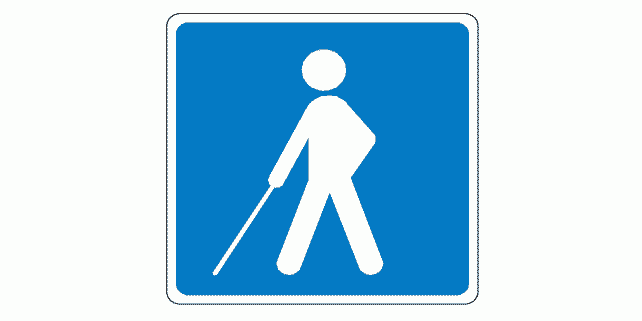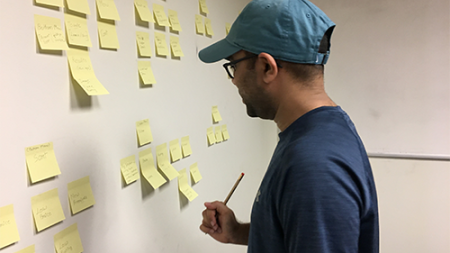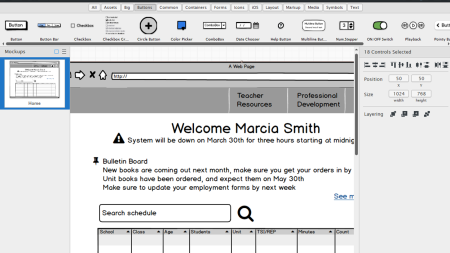
Related Class
Website accessibility lawsuits: how to avoid being a target
- Published on

While avoiding website accessibility lawsuits is a worthwhile endeavor, businesses, agencies, and organizations should also focus on the benefits of website accessibility and the reasons behind web accessibility laws. Just as all people are able to visit a business or store in-person that is open to the public, website accessibility laws advocate for disabled individuals to be able to use a website that offers goods, services, or information to the public. Many businesses, organizations, and government agencies seek to create accessible websites in an effort to enable their site for the widest possible audience. Yet some organizations are moved to action as they seek to avoid website accessibility lawsuits.
How common are website accessibility lawsuits?
Nationwide, more than 250 businesses have been sued in federal court since the start of 2015, concerning allegedly inaccessible websites, according to a major global law firm that recently conducted a survey of web accessibility litigation. Many of the accessibility lawsuits appear to settle before trial, with most awards under $100,000. The proceeds from litigation frequently flow heavily to lawyers bringing the suits on behalf of disabled or visually impaired individuals. The U.S. Justice Department also brings actions against businesses and organizations that have inaccessible sites. Large organizations such as H&R Block and the grocery delivery company that is an arm of one of the largest grocers in the United States both settled with the Justice Department after being accused of having inaccessible sites. As part of their settlements, they are required to make their websites accessible to those with visual impairments. Overall, the breakdown of website accessibility lawsuits includes:
- 148 retail and online stores
- 45 restaurants
- 21 hospitality and entertainment businesses
Who is sued in website accessibility lawsuits
Website accessibility lawsuits have been brought against a wide variety of businesses and organizations. They include many household names such as Foot Locker, Toys “R” Us, Brooks Brothers, and the NBA (National Basketball Association). Many of them are brought by a small group of lawyers or law firms that frequently bring website lawsuits.
When are accessible websites required
Any business or place open to the public is required to be accessible to disabled individuals because of the Americans with Disabilities Act (ADA). This federal law went into effect more than 25 years ago and applies across the United States. Under the ADA, websites were not originally included. The law has been extended to businesses and organizations by Federal courts. Across the board courts have held that websites attached to actual locations of a business or organization to which the ADA applies must also have accessible websites. Some courts have also held that website-only businesses must also comply with the ADA.
Government agencies and government-run institutions also have other website disability requirements, such as the Rehabilitation Act. The better known components of these acts are Section 504 and Section 508 which require accessible content and prohibit discrimination.
Avoiding Website Accessibility Lawsuits
There are several steps an organization can take to avoid being the target of a website accessibility lawsuit. These include:
- Having managers learn web accessibility best practices.
- Provide website accessibility training for web developers and web designers
- Learn UX best practices for helping all users to effectively use your website
- Have an independent Website Accessibility Audit conducted
- Provide alternate contact options for website users so they are able to get assistance if they encounter challenges online.
With some planning, it’s possible to provide better online services and reach a wider audience while shielding your organization from website accessibility litigation.
About the author
Jennifer Smith is a user experience designer, educator and author based in Boston. She has worked in the field of user experience design for more than 15 years.She has designed websites, ecommerce sites, apps, and embedded systems. Jennifer designs solutions for mobile, desktop, and iOT devices.
Jennifer delivers UX training and UX consulting for large Fortune 100 companies, small start-ups, and independent software vendors.She has served as a Designer in Residence at Microsoft, assisting third-party app developers to improve their design solutions and create successful user experiences. She has been hired by Adobe and Microsoft to deliver training workshops to their staff, and has traveled to Asia, Europe, India, the Middle East, and across the U.S. to deliver courses and assist on UX design projects. She has extensive knowledge of modern UX Design, and worked closely with major tech companies to create educational material and deliver UX workshops to key partners globally. Jennifer works with a wide range of prototyping tools including XD, Sketch, Balsamiq, Fireworks, Photoshop, Illustrator, and Blend for Visual Studio. She also works extensively in the fields of presentation design and visual design.
Jennifer is also an expert on Photoshop, digital image editing, and photo manipulation. Having written 10 books on Photoshop, and having consulted and provided training to major media companies and businesses around the globe.
Jennifer is the author of more than 20 books on design tools and processes, including Adobe Creative Cloud for Dummies, Adobe Creative Cloud Digital Classroom, and Photoshop Digital Classroom. She has been awarded a Microsoft MVP three times for her work with user experience design in creating apps for touch, desktop, and mobile devices. Jennifer holds the CPUX-F certification from the User Experience Qualification Board and assists others in attaining this designation in leading a UX certification course at American Graphics Institute. She is a candidate for a Master’s degree in Human Factors in Information Design.


